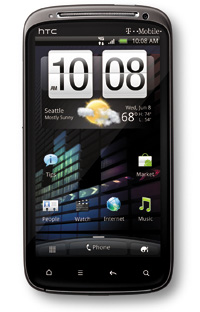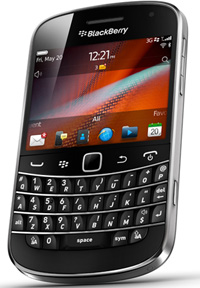 Ubuntu
coming to Android, allows any phone with a dual-core processor to run a
full desktop OS Canonical has finally brought Ubuntu to the mobile
world, and not as a tiny mobile OS for use on a 4-inch display no for
desktop use FROM that mobile device. What Ubuntu is doing here is
sitting on an Android device they used a
Motorola Atrix 2 for testing purposes, ironically enough which reveals
the software only when the device is plugged into a large display with
its HDMI port. This build works as a virtualized environment as an app
in Android 2.3 Gingerbread AOSP build at the kernel level.
Ubuntu
coming to Android, allows any phone with a dual-core processor to run a
full desktop OS Canonical has finally brought Ubuntu to the mobile
world, and not as a tiny mobile OS for use on a 4-inch display no for
desktop use FROM that mobile device. What Ubuntu is doing here is
sitting on an Android device they used a
Motorola Atrix 2 for testing purposes, ironically enough which reveals
the software only when the device is plugged into a large display with
its HDMI port. This build works as a virtualized environment as an app
in Android 2.3 Gingerbread AOSP build at the kernel level.Canonical unveiled today a brand new mobile product dubbed Ubuntu for Android. The product is massive in scale and will bring the popular Linux desktop OS to high-end, multi-core Android smartphones.
Canonical has also been vocal about how this release will not be open source as Ubuntu is otherwise, instead this being an application that will be coming pre-installed on devices in what they hope is the near future. Canonical will be working with manufacturers and/or carriers to get this app working on future handsets for HDMI use. Hopefully we’ll see this action in the first half of 2012, and perhaps we’ll have some competition from Google’s own Jellybean system.
Designed to work with Android on users’ multi-core handsets, Ubuntu for Android will launch the full Ubuntu desktop OS whenever the phone is docked with a keyboard and monitor via HDMI and USB. The rest of the time, the phone runs a normal build of Android.
All services, data, and even 3G/4G connections are shared between the Ubuntu OS and the Android mobile OS. Contacts, phone calls, and SMS/MMS messages are all accessible from both as well.

The full-on Ubuntu OS comes pre-loaded with the Chromium Web browser, the Thunderbird e-mail client, and a selection of other desktop apps. Other than these though, everything in the Ubuntu desktop OS is exactly the same as you would find in any current version of Ubuntu.
While Ubuntu for Android is pretty ground-breaking, its unfortunately not just an app. Ubuntu will have to come preloaded on smartphones. No carrier or OEM partnerships were announced just yet, but you’d have to imagine someone will jump on this, and fast.
Canonical says there will be demonstrations regarding Ubuntu for Android at Mobile World Congress next week in Barcelona. Definitely stay tuned for this one, as it will likely change mobile computing entirely.
A full video of Ubuntu for Android has been posted online courtesy of AndroidPolice. Those interested in the product should definitely take a look. Pretty awesome, amazing stuff.
 The
New Lensbaby Edge 80 lens is now available on B&H Photo. it is an
80mm lens with an aperture that ranges from f/2.8 to f/22. The lens
comprises of 5 multi-coated glass elements within 4 groups and the 12
rounded aperture blades.
The
New Lensbaby Edge 80 lens is now available on B&H Photo. it is an
80mm lens with an aperture that ranges from f/2.8 to f/22. The lens
comprises of 5 multi-coated glass elements within 4 groups and the 12
rounded aperture blades.
 The
New Laptop Razer Blade 17-inch Gaming Laptop Razer announced this week
that its much anticipated Razer Blade 17-inch gaming laptop is delayed
past the expected holiday deadline and won’t likely arrive until mid- to
late January 2012. The good news is the
Blade will now come with an SSD instead of a traditional HDD at no
additional cost to buyers. Razer is also handing out a custom-designed
mouse for free as an apology for the delay.
The
New Laptop Razer Blade 17-inch Gaming Laptop Razer announced this week
that its much anticipated Razer Blade 17-inch gaming laptop is delayed
past the expected holiday deadline and won’t likely arrive until mid- to
late January 2012. The good news is the
Blade will now come with an SSD instead of a traditional HDD at no
additional cost to buyers. Razer is also handing out a custom-designed
mouse for free as an apology for the delay.

 Motorola
Fire XT Dual SIM phone powered by Android OSthere are number of Dual
SIM phones but most of them are piece of craps from China. also most of
the dual SIM phone are regular phones, not smart phone. However Motorola
has released a new smart phone with Android OS and it supports Dual
SIM. it has a 2.8 inc hTFT capacitive
touchscreen and a full QWERTY keypad. the screen resolution is 240 x 320
pixels which is quite low. Unlike many other Motorola Android phones,
Motorola Fire XT has a new user interface called Moto Switch UI.
Motorola
Fire XT Dual SIM phone powered by Android OSthere are number of Dual
SIM phones but most of them are piece of craps from China. also most of
the dual SIM phone are regular phones, not smart phone. However Motorola
has released a new smart phone with Android OS and it supports Dual
SIM. it has a 2.8 inc hTFT capacitive
touchscreen and a full QWERTY keypad. the screen resolution is 240 x 320
pixels which is quite low. Unlike many other Motorola Android phones,
Motorola Fire XT has a new user interface called Moto Switch UI.
 LG Introduces 84-Inch 4K TV 3D By New-Digital-Gadgets.Com (LG 3D UD TV)
boasts high picture quality with 8 million pixels, four times the
resolution (3840×2160) of existing Full HD TV panels. It features LG?s
Slim and Narrow Bezel Design as well as 3D Depth Control, which allows
users to control the 3D effect. In addition, the 3D Sound Zooming
provides users with 3D sound, according to LG.
LG Introduces 84-Inch 4K TV 3D By New-Digital-Gadgets.Com (LG 3D UD TV)
boasts high picture quality with 8 million pixels, four times the
resolution (3840×2160) of existing Full HD TV panels. It features LG?s
Slim and Narrow Bezel Design as well as 3D Depth Control, which allows
users to control the 3D effect. In addition, the 3D Sound Zooming
provides users with 3D sound, according to LG.



 HTC
introduced the latest Android flagship for the U.S market, the HTC
Sensation 4G is expected to hit T-Mobile shelves this summer.
HTC
introduced the latest Android flagship for the U.S market, the HTC
Sensation 4G is expected to hit T-Mobile shelves this summer. RIM
has officially announced two new BlackBerry smartphones – the Bold 9900
(Dakota) and Bold 9930 (Montana) which are the thinnest yet that runs
Blackberry OS 7.
RIM
has officially announced two new BlackBerry smartphones – the Bold 9900
(Dakota) and Bold 9930 (Montana) which are the thinnest yet that runs
Blackberry OS 7. The New LG Optimus Black.
The standout feature of the Optimus Black is its NOVA display, LG
claims that this display is designed to be the mobile screen the LG
Optimus Black at the CES 2011. NOVA also reduces power consumption by 50
percent compared to traditional LCD screens meaning more battery life
to play with all the new apps the Optimus has to offer. The Optimus
Black also features a 2 megapixel front
facing camera for video calls – a world first. The device measures only
9.2mm and is the thinnest smartphone in the market for now. It features a
4 Nova display, designed to be the brightest, clearest and most
readable among mobile screens with 700 nits of brightness for optimal
visibility. Other notable features of the said handset include Optimus
UI 2.0, Wi-Fi Direct for quick and high-quality data transfer between
mobile devices, 2MegaPixel front facing camera, and a 1,500 mAh battery.
The LG Optimus Black will be launched globally by the first half of the
year. It currently runs on Android 2.2 but can be later on upgraded to
2.3 Gingerbread according to LG officials. LG Optimus Black at the
ongoing CES 2011. The LG Optimus Black is even thinner than the iPhone 4
and is just 9.2mm thick. The handset features an 4-inch NOVA display,
which according to LG, is the brightest, clearest and most readable
among mobile screens LG Optimus Black By LG Mobile Phone and All-digital-gadgets.blogspot.com.
The New LG Optimus Black.
The standout feature of the Optimus Black is its NOVA display, LG
claims that this display is designed to be the mobile screen the LG
Optimus Black at the CES 2011. NOVA also reduces power consumption by 50
percent compared to traditional LCD screens meaning more battery life
to play with all the new apps the Optimus has to offer. The Optimus
Black also features a 2 megapixel front
facing camera for video calls – a world first. The device measures only
9.2mm and is the thinnest smartphone in the market for now. It features a
4 Nova display, designed to be the brightest, clearest and most
readable among mobile screens with 700 nits of brightness for optimal
visibility. Other notable features of the said handset include Optimus
UI 2.0, Wi-Fi Direct for quick and high-quality data transfer between
mobile devices, 2MegaPixel front facing camera, and a 1,500 mAh battery.
The LG Optimus Black will be launched globally by the first half of the
year. It currently runs on Android 2.2 but can be later on upgraded to
2.3 Gingerbread according to LG officials. LG Optimus Black at the
ongoing CES 2011. The LG Optimus Black is even thinner than the iPhone 4
and is just 9.2mm thick. The handset features an 4-inch NOVA display,
which according to LG, is the brightest, clearest and most readable
among mobile screens LG Optimus Black By LG Mobile Phone and All-digital-gadgets.blogspot.com.







